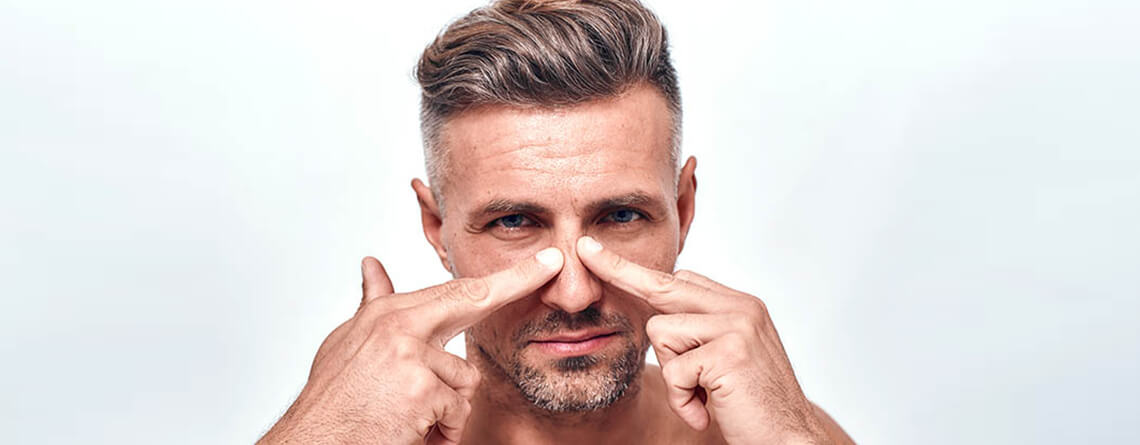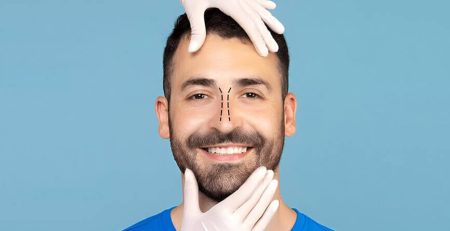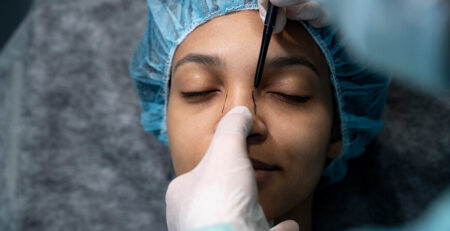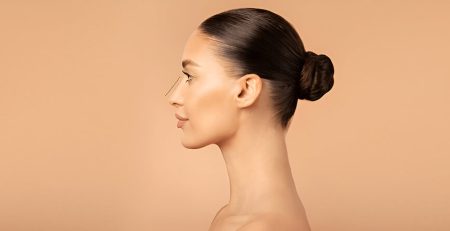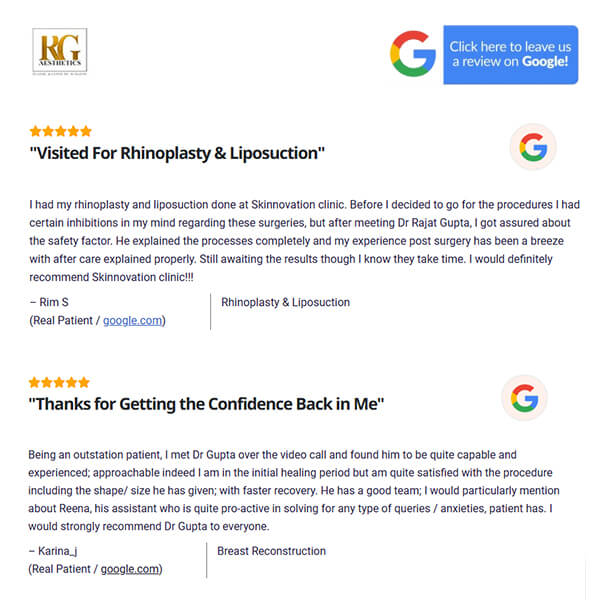How Long to Recover from Rhinoplasty?
Rhinoplasty, or nose surgery, is a well-known cosmetic procedure many people choose to enhance their facial appearance or correct breathing issues. However, one common question arises: “How long does it take to recover from rhinoplasty surgery?” It usually takes 2-3 days to get back to the normal day-to-day activities and about 4-6 weeks to resume pre-surgery life fully. But you may have to wait for about a year to see the final results. Understanding the recovery timeline can help you prepare for the journey ahead. This guide covers the rhinoplasty recovery process, including the essentials and often overlooked aspects.
Keep reading!
What is Rhinoplasty Surgery?
Rhinoplasty surgery, commonly known as a nose job, is the reshaping of the nose to improve its appearance and function in some cases. This can include altering the size, shape, or proportions of the nose, correcting birth defects, or fixing issues from injuries. A board-certified plastic surgeon is the best choice to perform the procedure, as it ensures the best results and patient safety.
Now let us take a look at the rhinoplasty recovery process – step by step.
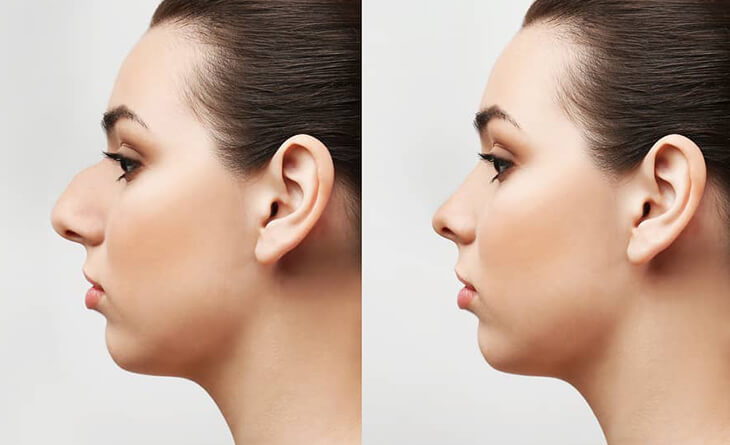
Have questions or want to get started? We are ready to help you with a smile!
Immediate Post-Surgery Phase
The First 24 Hours
Right after rhinoplasty surgery, you’ll likely feel groggy from the anaesthesia. You may experience some discomfort, but this can be managed with prescribed pain medications. Swelling and bruising around the nose and eyes are common during this period. Your surgeon will place a splint on your nose to protect and support it as it heals.
Tips for the First Day:
- Rest with your head elevated to reduce swelling.
- Apply cold compresses to the swollen areas.
- Avoid any strenuous activity.
The First Week: Initial Healing
During the first week, you’ll need to take it easy. Swelling and bruising will peak around the third or fourth day, but don’t be alarmed—this is a normal part of the healing process. Most people feel well enough to return to light activities after a few days, but it’s crucial to avoid anything that might impact your nose.
Important Considerations:
- Attend follow-up appointments with your surgeon.
- Keep your head elevated while sleeping.
- Do not blow your nose.
- Avoid wearing glasses or sunglasses.
Splint Removal
Splint removal is usually done after about a week to 10 days of the surgery. Your surgeon will remove the nasal splint and secure the surgical site with bandages. It is a significant milestone as it marks the beginning of a more comfortable recovery phase ahead.
Week 2: Bruising Subsides
By the second week, the most noticeable bruising and swelling should begin to subside. Many people feel comfortable enough to return to work or study, provided their occupation doesn’t involve heavy physical activity.
Quick Recovery Tips:
- Continue to avoid strenuous activities.
- Use nasal saline sprays to keep the nasal passages moist.
- Be gentle with facial hygiene routines.
Weeks 3-4: Getting Back to Normal
As you enter the third and fourth weeks, you’ll notice significant improvements. Swelling will continue to decrease, and the overall shape of your new nose will start to become more apparent. However, it’s still essential to avoid any activities that could potentially injure your nose.
Months 2-3: Settling In
At this stage, most of the swelling will have subsided, and you can see visible improvements in the results you expect. However, subtle swelling can persist for several months, especially at the tip of the nose. You must follow your surgeon’s advice on post-operative care to ensure the best results.
Additional Tips:
- Avoid direct sunlight, and always use sunscreen to protect your skin.
- Continue avoiding contact sports or activities that risk nose injury.
- Keep up with your follow-up appointments for optimal recovery.
As your nose continues to settle, adhering to these tips will support lasting results. Ongoing care and follow-up appointments remain important for a successful rhinoplasty recovery.
Recovery After Minor Revisions
For those who have undergone minor revisions, the recovery process is generally shorter depending on the extent of revisions. Since the changes are less extensive, swelling and bruising are normally less pronounced, and patients can return to normal activities more quickly. However, following your surgeon’s instructions is still extremely important to ensure proper healing and optimal results.
Adhering to these guidelines and maintaining consistent post-operative care can support a smooth and successful rhinoplasty recovery.
Rhinoplasty and Sleep: Finding Comfort
Sleeping after rhinoplasty surgery can be challenging. You must keep your head elevated to reduce swelling and avoid disturbing the healing nose.
Sleep Tips:
- Use extra pillows or a wedge pillow to elevate your head.
- Sleep on your back to prevent any pressure on your nose.
- Consider using a travel pillow to keep your head stable.
Adopting these sleep tips will help you rest comfortably and promote healing. Proper sleep is a vital component of your rhinoplasty surgery recovery.
Managing Expectations: What to Expect Emotionally
The emotional journey of rhinoplasty recovery is often overlooked. It’s normal to feel a range of emotions, from excitement to anxiety.
Emotional Support Tips:
- Give yourself time to adjust to your new look.
- Reach out to support groups or online communities.
- Talk to your surgeon about any concerns you may have.
Addressing your emotional needs during rhinoplasty recovery is as important as physical healing. Embrace support and give yourself time to adjust to your new appearance.
Personalized Recovery Plans: Tailoring to Your Lifestyle
Each person’s lifestyle can affect their recovery process. A customized recovery plan can help you heal better and faster.
For example,
- Athletes can focus on low-impact activities and gradually return to sports.
- Busy professionals can plan a flexible work schedule to accommodate rest.
- Parents of infants or toddlers can arrange for help with childcare and household duties.
The Role of Hydration in Healing
Staying hydrated is crucial for reducing swelling and promoting healing. Water helps flush out toxins and supports overall health.
Hydration Tips:
- Drink plenty of water throughout the day.
- Include hydrating foods like fruits and vegetables in your diet.
- Avoid caffeinated and alcoholic beverages that can dehydrate you.
Post-Surgery Skincare: Protecting Your New Nose
Proper skincare can aid in the healing process and prevent complications.
Skincare Tips:
- Gently clean your face with mild, non-abrasive cleansers.
- Avoid direct sunlight and use sunscreen.
- Do not apply heavy makeup or skincare products around the nose.
Social Life and Rhinoplasty Recovery: When to Step Back In
Returning to social activities after rhinoplasty surgery can be daunting. Giving yourself time to heal and gain confidence in your new appearance will make the results even better!
Social Tips:
- Start with small gatherings and gradually increase social activities.
- Be prepared for questions and comments from others.
- Maintain self-confidence and focus on your healing process.
Incorporating Gentle Exercise: Keeping Fit While Healing
Staying active is important, but you will have to avoid strenuous activities that could affect your recovery.
Exercise Tips:
- Engage in light exercises like walking.
- Avoid activities that risk bumping or injuring your nose.
- Consult your surgeon before resuming your regular exercise routine.
Using Technology: Apps and Tools for Recovery
Several apps and online tools can help you manage your recovery process more efficiently.
Recommended Apps:
- Recovery trackers to monitor your progress.
- Medication reminders to keep track of prescriptions.
- Virtual follow-up appointments with your surgeon.
Myths and Facts About Rhinoplasty Recovery
There are many misconceptions about rhinoplasty recovery. Clearing up these myths can help set realistic expectations.
Common Myths:
Myth: You’ll see final results immediately.
Fact: It can take up to a year for the final shape to fully reveal itself.
Myth: Recovery is extremely painful.
Fact: Discomfort can be managed with prescribed medications.
The Impact of Weather and Seasons on Recovery
Weather conditions can affect your recovery process. It’s essential to prepare for seasonal changes.
Weather Tips:
- Summer: Stay indoors during peak sun hours and use sunscreen.
- Winter: Protect your nose from cold, dry air with a scarf.
- Spring: Be mindful of allergens that can cause sneezing and irritation.
Preparing Your Home for Recovery
Setting up your home before rhinoplasty surgery can make the recovery period more comfortable.
Home Preparation Tips:
- Create a recovery space with comfortable seating, pillows and things to keep you busy.
- Stock up on essential supplies like medications and easy-to-prepare foods.
- Arrange for help with daily tasks if needed.
Rhinoplasty Recovery for Smokers
Smoking can significantly impact your recovery process. Quitting or reducing smoking before surgery is highly recommended.
Tips for Smokers:
- Seek support to quit or reduce smoking.
- Avoid smoking for at least two weeks before and after surgery.
- Understand that smoking can delay healing and increase the risk of complications.
How a Board-Certified Plastic Surgeon Makes a Difference
Choosing a skilled and qualified surgeon makes all the difference. It ensures a successful rhinoplasty surgery and recovery. Board certification indicates that the surgeon has undergone rigorous training and adheres to high standards of patient care.
Why Dr. Rajat Gupta?
If you’re considering rhinoplasty surgery and want the best care in Delhi, look no further than Dr. Rajat Gupta. With 15 years of experience and a track record of successful surgeries, Dr. Gupta offers personalized care to ensure you achieve your desired results safely and effectively.
Way Forward
Take the first step towards your desired look and consult with Dr. Rajat Gupta, a board-certified plastic surgeon in Delhi. Your journey to a new you starts with expert care and guidance.
Recovering from rhinoplasty surgery is a gradual process that requires patience and careful attention to your surgeon’s advice. By understanding the recovery timeline and adhering to the guidelines provided by your surgeon, you are on a path to recovery free of any complications and natural-looking results of the rhinoplasty surgery. Remember, every patient’s recovery journey is unique, so stay in close contact with your board-certified plastic surgeon and follow their recommendations for the best outcome.
Dr. Rajat Gupta
MBBS, MS, DNB(Gen. Surg.),
DNB (Plastic Surgery)
Dr. Rajat Gupta is a board certified plastic surgeon in India with 13 years of experience to back his expertise in the domain of aesthetic surgeries.
Having completed his training from Maulana Azad Medical College and equipped with a thorough understanding of aesthetic needs of people, Dr. Gupta strives to offer the best remedies and cosmetic procedures outfitted with the latest technology to the aspirants in India and across the globe. To book an appointment, call: +91-9251711711 or email: contact@drrajatgupta.com

